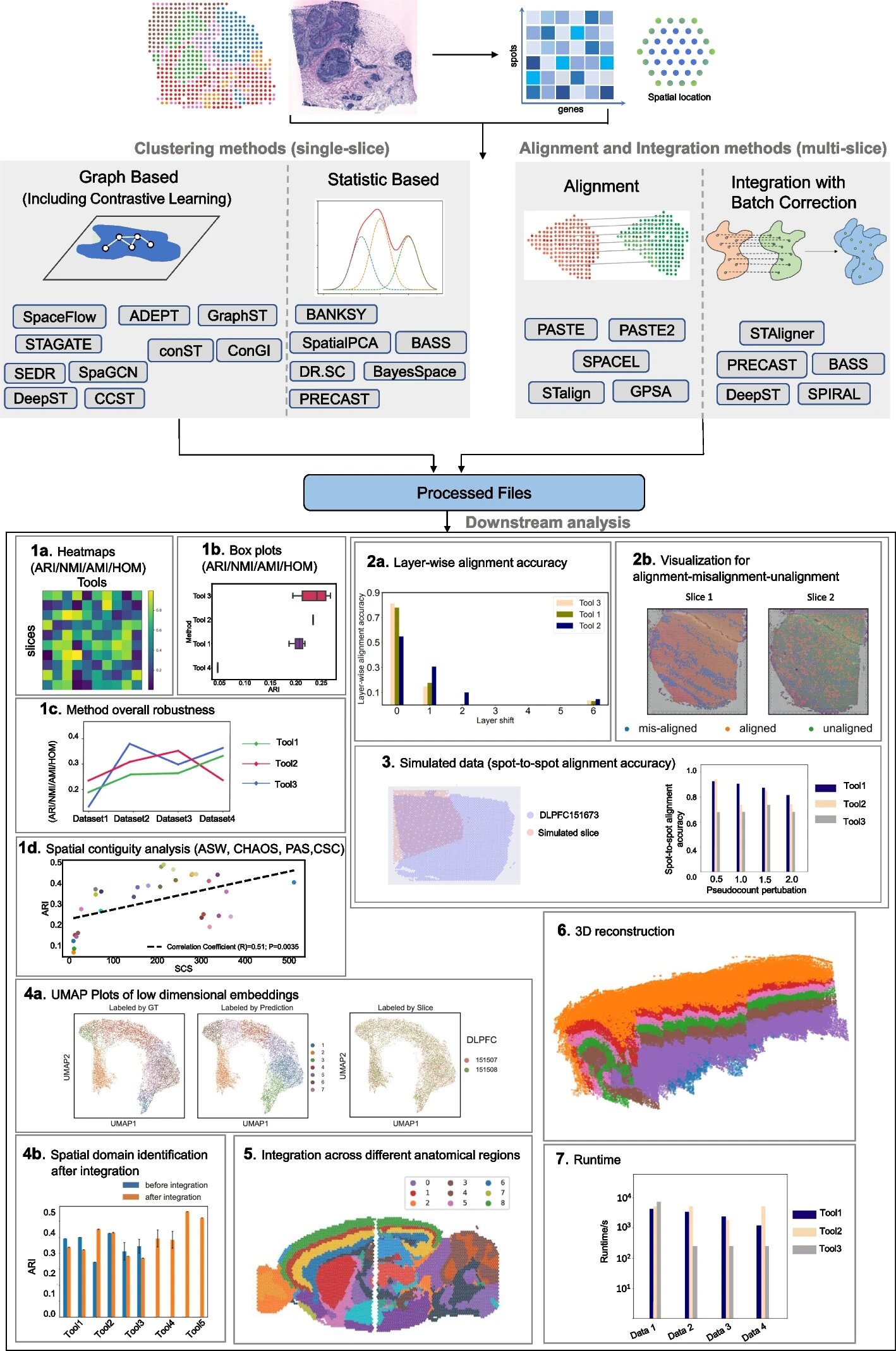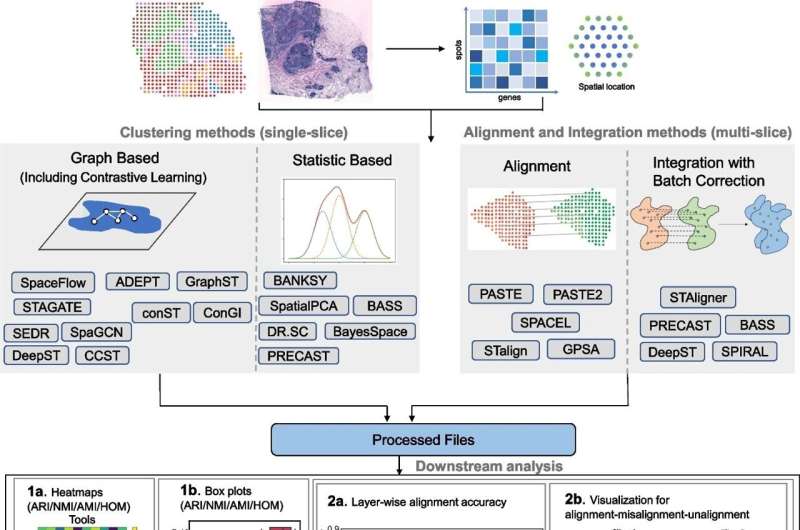

A team of Vanderbilt researchers has released a new benchmarking study that aims to assist scientists in selecting the most effective methods for analyzing spatial transcriptomics (ST) data.
The study led by Xin Maizie Zhou, assistant professor of biomedical engineering and computer science, evaluates computational tools in spatial transcriptomics (ST), a technology used to map gene expression patterns in tissues while preserving spatial context. It was recently published in Genome Biology.
ST involves slicing a tissue sample and placing it on a specially designed slide with spatially indexed barcodes. When the tissue is processed, the ribonucleic acid (RNA) in each specific location of the tissue is captured by these barcodes. After sequencing the RNA, the data can be mapped back to the original tissue locations, allowing researchers to visualize where certain genes are being expressed within the tissue architecture.
Since its widespread use began in 2020, this groundbreaking sequencing technology has revolutionized the understanding of complex tissues. Applications of ST include cancer research and neuroscience, such as mapping gene expression in parts of the brain to understand regional functions or disease mechanisms.
However, the variety of available tools for analyzing data from ST can be overwhelming, making it difficult to choose the right approach for specific research needs.
To address the issue, the Vanderbilt team systematically compared 16 clustering methods, five alignment methods, and five integration methods across a variety of datasets. Their findings offer practical recommendations for researchers working with spatial transcriptomics, helping them to identify tools that best match their research requirements.
“Our goal was to provide a clear and accessible guide for researchers navigating the options available in spatial transcriptomics analysis,” said Zhou, who is among the teaching faculty at Vanderbilt’s trans-institutional Data Science Institute. “We hope this study will be a useful resource for anyone working in this rapidly growing field.”
More information:
Yunfei Hu et al, Benchmarking clustering, alignment, and integration methods for spatial transcriptomics, Genome Biology (2024). DOI: 10.1186/s13059-024-03361-0
Provided by
Vanderbilt University
Citation:
Benchmarking study aims to assist scientists in analyzing spatial transcriptomics data (2024, October 10)
retrieved 10 October 2024
from https://phys.org/news/2024-10-benchmarking-aims-scientists-spatial-transcriptomics.html
This document is subject to copyright. Apart from any fair dealing for the purpose of private study or research, no
part may be reproduced without the written permission. The content is provided for information purposes only.